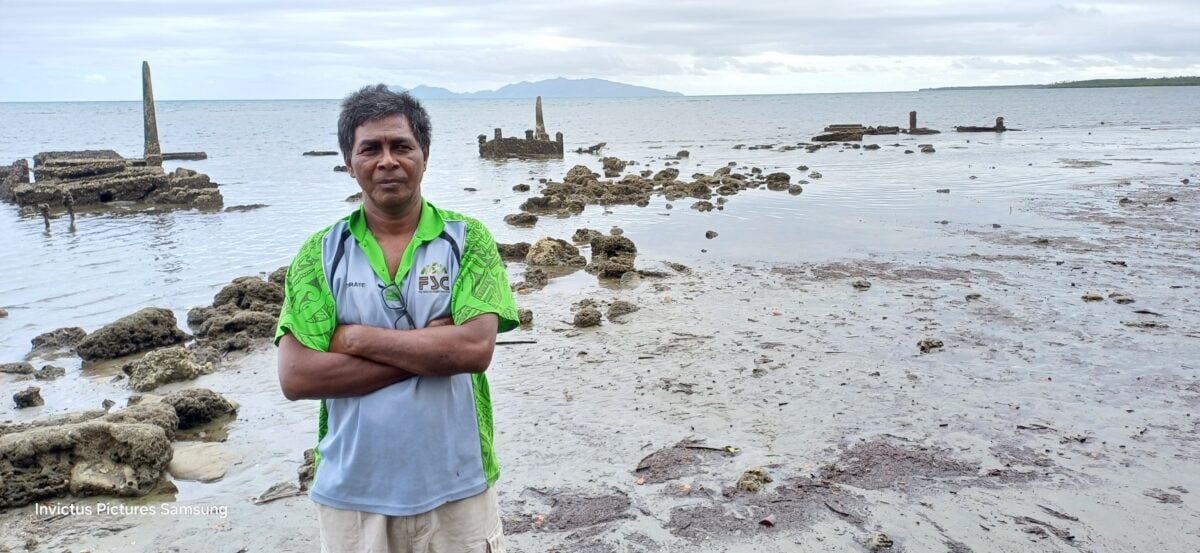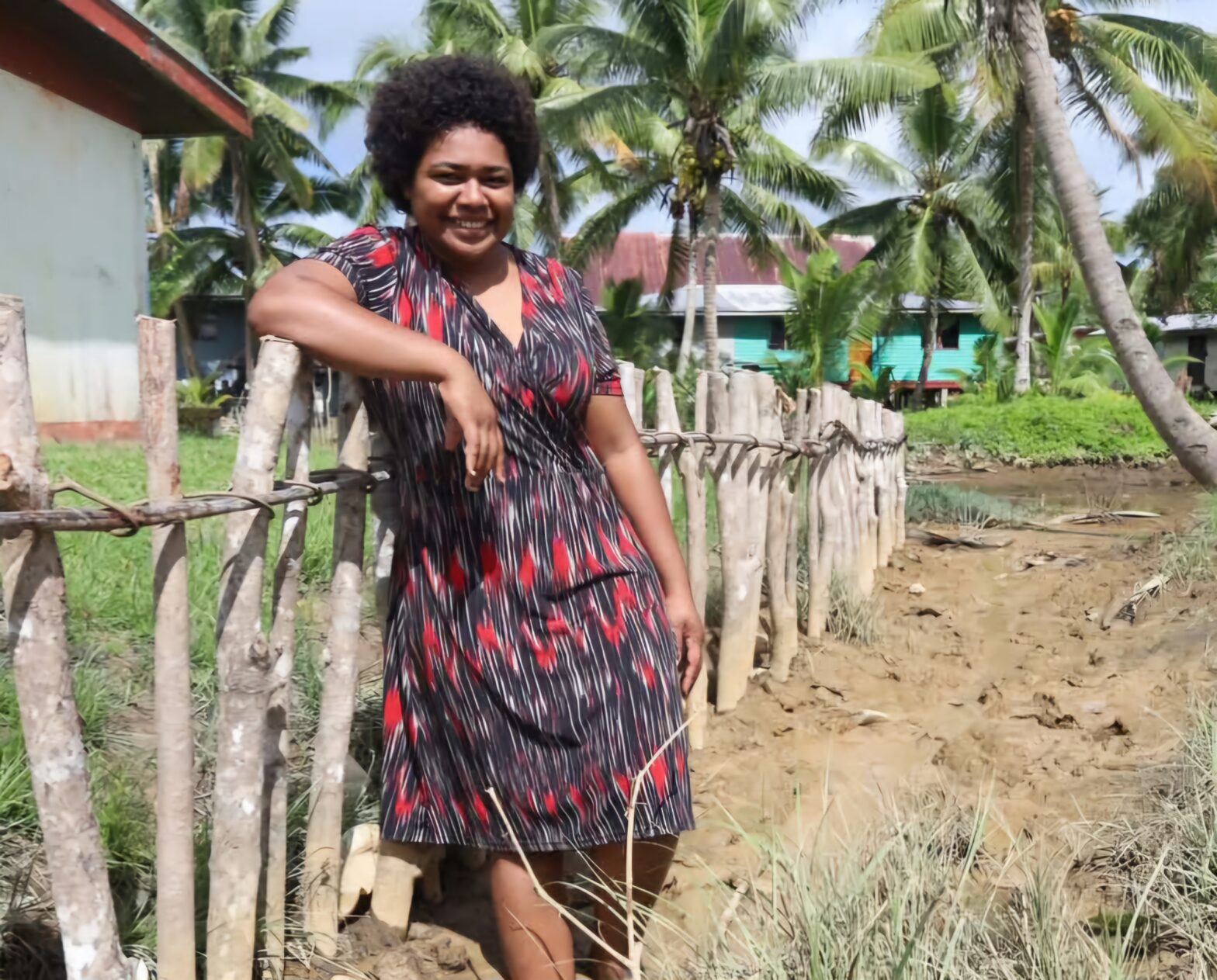In a dusty container yard just outside Fiji’s capital, Suva, a huge pile of used truck tyres takes up valuable space.
Yard Manager, John Hong-Tiy, needs to remove this useless pile of rubber to make way for shipping containers. The tyres will be trucked some 25 kilometres along the highway to a landfill site.
But intervention from an unlikely source now means the tyres will be diverted and take on a role which could mean the difference between life and death for a rural community along the coast at Togoru, just outside Navua Town.
At Togoru, three generations of the Dunn Family have watched helplessly as five acres of their land has been washed into the sea. The land on which the older Dunns played as children lies submerged by the waves.
Three seawalls built in the last 50 years have been destroyed and committed to an eternity under water.
Today, lifeless truck tyres which have helped haul cargo from Fiji’s ports to its supermarkets will take on new roles – integral parts of a wall in the sea. These tyres which have helped contribute to climate change may be the only way to save Togoru.
Barney Dunn, patriarch of the community, has a dream that his grandchildren will walk on land in a place which is, at the moment, covered by sea.
“I want them to ran where I played and that means reclaiming the sea, making dry land where they can play and have fun,’’ Dunn said.
“We can start with 600 tyres and bury them using sand and rocks from the foreshore.
“The current here runs from the west to the east. If we lay the tyres in a north-south direction, the waves should pile the sand around this artificial wall. When the sand builds up, we plant coconut trees and start fighting back.’’
Standing on the shore at Togoru, the graves of the Dunns who have passed on rise eerily from the sea. They are grim reminders that where there is now sea, there once was a rolling green field – a place of recreation for the living and a rest for the dead.
The wrought iron decorations on the graves have mainly rusted away, the cement tombs encrusted with barnacles.
Along the shore, erosion has exposed the roots of coconut palms which will share the watery graves of trees which have gone before them.
“Soon the living and the dead will all be in the sea. This erosion just keeps coming and we are running out of options,’’ Dunn said.
“To make it worse, the sea temperature is rising every year and our source of income – the fish – are now further from shore.’’
The community has sought help from the government and non-governmental organisations but bureaucratic obstacles have prevented progress. Frustration has set in and some family members have left.
But Dunn will not give up easily and will try every conceivable method to regain his lost heritage.
He may not have an engineering degree, but 50 years of observation and local knowledge lead him to believe that reclamation using nature and a helping hand from tyres, boulders and fallen trees will do the trick.
“The waves have taken the sand and deposited it on the far side of our property,” Dunn said.
“What was once part of the river mouth is closed because the sand from the front of the property has filled that gap. If we put a series of walls perpendicular to the shore, we will regain our land.’’
The needs of the Togoru people are simple and achievable at a practical level. Conservative estimates put coastal rehabilitation costs at around $8.5 million, according to Government surveyors and land experts who have visited the site.
Dunn, however, believes the community can begin rehabilitation work and regain some of the land with minimal help.
And with used tyres from generous companies, Dunn’s plans have started to take shape.
Togoru has also received $USD2000 from the Presbyterian Church USA which has decided to join the fight and help carry the burden of the people after visiting them in October.
The money will fund the initial phase of reclamation – transporting tyres to Togoru and hiring local labour.
“We admire the resilience of the community in the face of this adversity,’’ said Presbyterian coordinator, Philip Woods.
“But it is clear that they face a clear and present danger. We hope to be able to help Barney and his people in a meaningful way.’’
Only time will tell how much of a difference the relocation of a mountain of tyres will make to the lives of this community.
This is a story grant supported by Earth Journalism Network.




